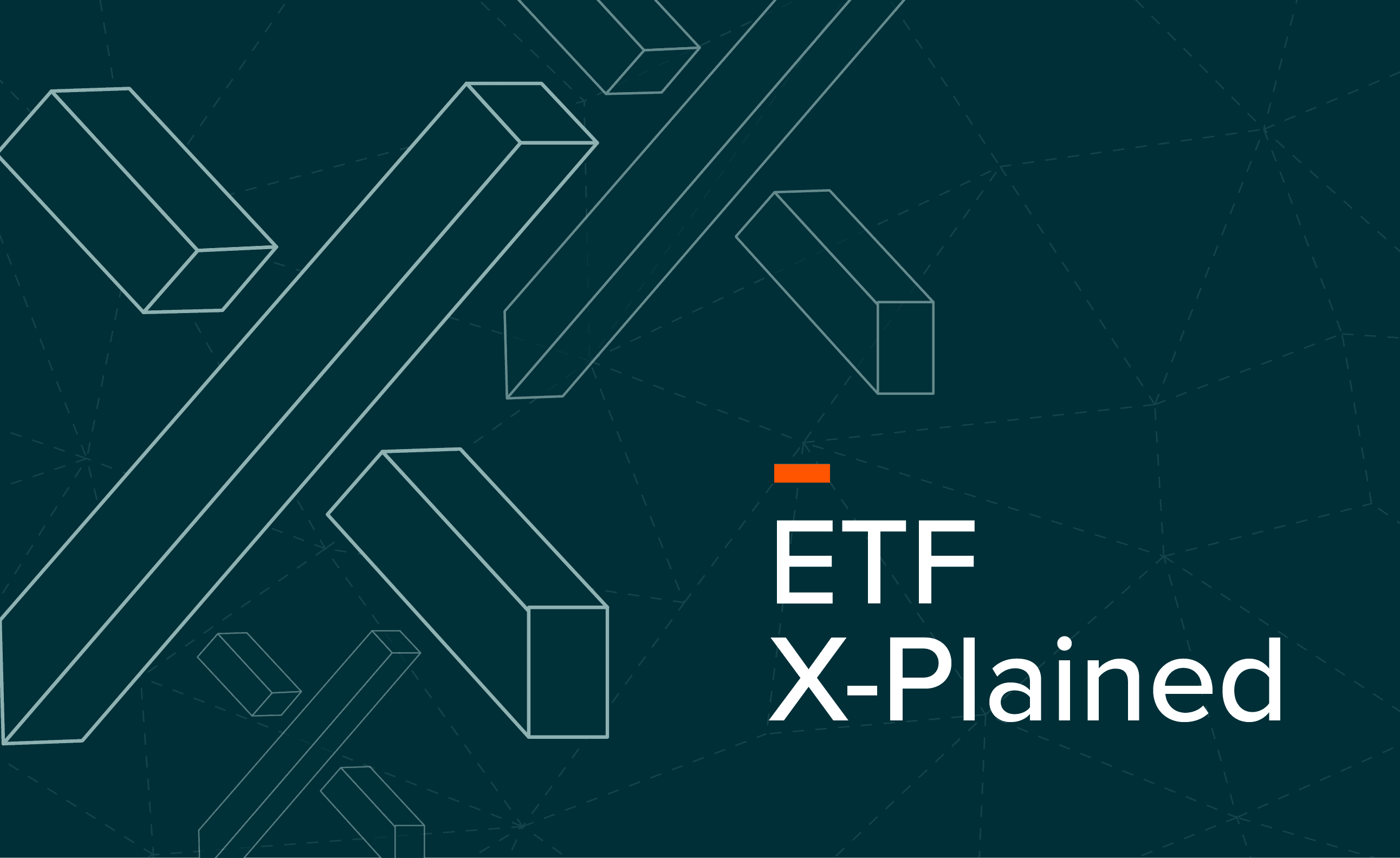Finding reliable income to complement a portfolio and risk profile can – at times – prove to be a difficult task. Covered calls, which are an options-based strategy, can help generate income and manage risk in a variety of market conditions. Due to their technical nature, these strategies are normally reserved for professional investors, however covered call ETFs make these historically complex and costly strategies accessible to more investors.
Options strategies can help investors navigate a variety of market conditions or achieve certain outcomes like generating income or managing risk. Often, these strategies invest in specific assets, such as the stocks in an index, and implement some combination of buying or selling calls and puts on those same assets in an effort to achieve the desired outcome. ETFs investing in options can be an efficient tool for investors looking to incorporate these strategies in their portfolio.
Let's X-Plain:
- What are covered calls?
- What are covered call ETFs?
- Why use covered call ETFs?
- How to use covered call ETFs in a portfolio
What are Covered Calls and Covered Call ETFs?
A covered call strategy involves buying a stock or basket of stocks and selling a call option on those securities. Selling a call option forfeits the upside potential on those underlying stocks if it’s written at-the-money (ATM). In exchange, the investor receives a premium for selling the call option. Therefore, a covered call strategy can be used to generate additional income from equities.
Covered Call Features
- Generates income based on premiums received from selling the call options.
- Upside potential is capped, while downside risk is mitigated to the extent of the option premiums received.
- Can generate higher income during volatile markets since option premiums are historically correlated to the underlying security’s implied volatility.
- Full coverage (100% covered) entails writing calls on 100% of the value of the underlying securities owned in the portfolio. A portfolio which is 100% covered maximises the premium income but forfeits all upside potential.
How Covered Call Strategies Respond to Different Market Conditions
Down Market: If a covered call ended the month below the strike price. A fund which sold the call option would potentially benefit from the premium received. This may offset some or all of the decline in the underlying equity holdings.
Flat market: If the index price has not changed at the end of the month, a covered call ETF keeps the money it collected from selling the monthly index call and the fund still owns the underlying equities.
Up market: If the index price rises at the end of the month, potential gain will be limited since the Fund sold a call option at a predefined strike price. As the index rises above the strike price, the fund still keeps the money collected from selling the monthly index call option, but will not benefit from the entire increase in the index value.
What are Covered Call ETFs?
Covered call ETFs are popular strategies and can save investors the time and some of the potential risks, like managing margin calls, of running covered call strategies directly.
Whilst ETFs have management fees, there are still cost benefits that come with the scale at which the ETF runs compared to the brokerage and risk of individual management.
Why use Covered Call ETFs?
Alternative and Diversified Income Source
Covered call strategies can help investors generate diversified income or balance objectives between growth and income, particularly in a rising rate environment.
These strategies also diversify an investor’s source of income away from just equities and bonds, which historically struggle in rising rate environments or times of volatility. Diversification across asset classes is important because simple diversification, such as the 60/40 portfolio split across equities and fixed income, may not meet investors’ specific income and growth needs. By using a covered call ETF, you can also smooth out the income profile of a portfolio with either monthly or quarterly distributions compared to many companies paying dividends semi-annually.
Offers a Buffer During Drawdowns
For many investors, such as retirees, protecting principal during market selloffs can be just as important as income generation. Covered call strategies, by taking in the premium of the sold call option, can help buffer downturns as the premiums provide an extra source of return. This is reflected in the graph below, which shows the lower drawdowns of covered call indexes.
However, this does come with a trade-off. In strong bull markets, due to covered calls capping the upside, the gains that could have been made over holding the underlying stock or index are limited.
How to Use Covered Call ETFs in a Portfolio
Options-based strategies can help investors navigate various market conditions, including the type of elevated rising interest rate and inflation-driven volatility in the market currently. These strategies can help investors achieve certain objectives like generating income or managing downside risk. For example, compared to traditional equity opportunities, certain option strategies can achieve a more efficient balance of income and growth and increase portfolio yield. Markets are variable, but certain options strategies, including those offered by Global X, could help provide investors some stability amid uncertainty.
Investors can consider using covered call strategies in a portfolio as:
- A core portfolio holding to replace a portion of US or Australian equity exposure, as the options premiums generated from selling calls can smooth drawdowns without deviating substantially from benchmark.
- A satellite providing an alternative source of income, especially in times of heightened volatility or rising interest rates.







